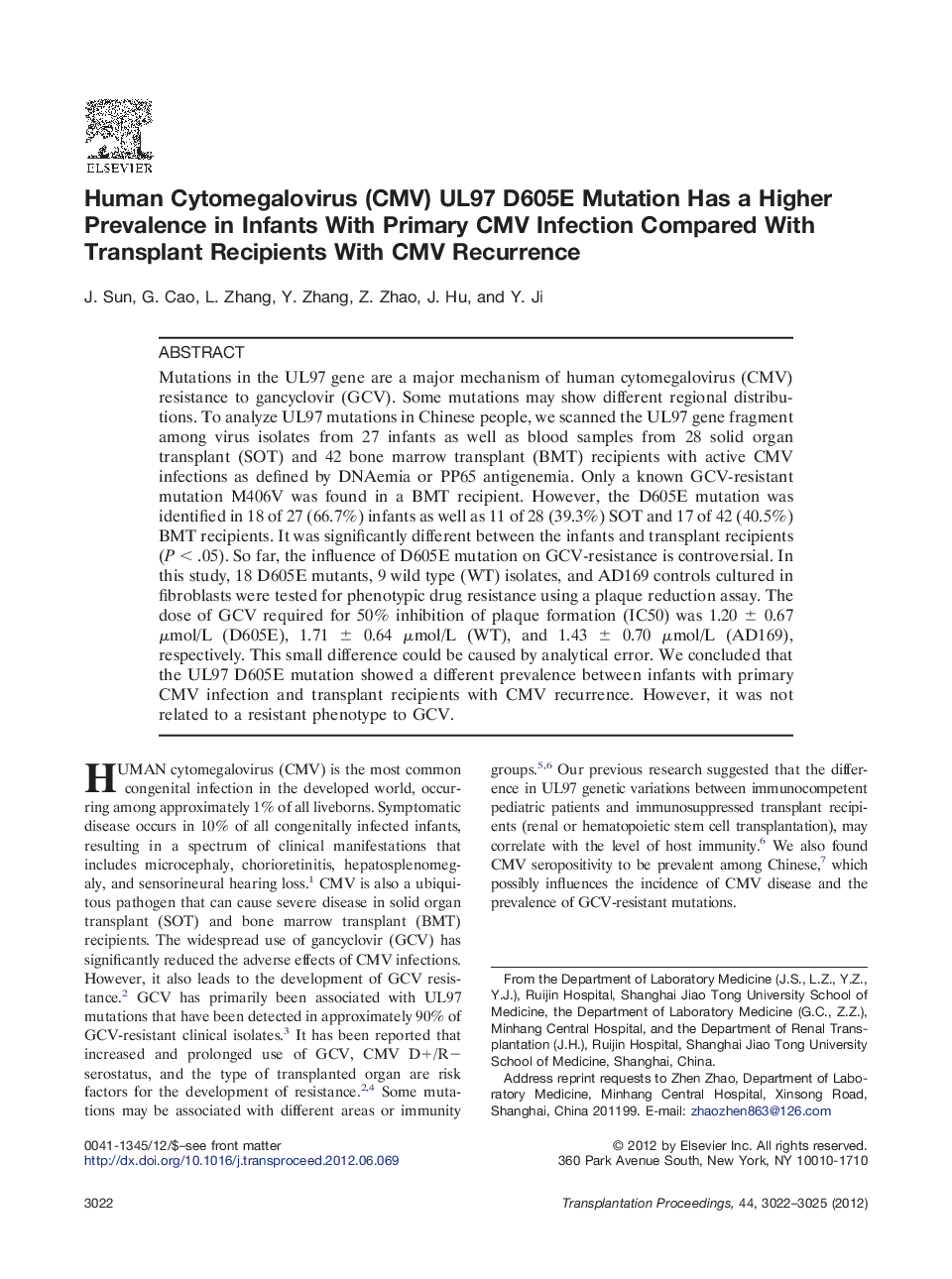| Article ID | Journal | Published Year | Pages | File Type |
|---|---|---|---|---|
| 4256227 | Transplantation Proceedings | 2012 | 4 Pages |
Abstract
Mutations in the UL97 gene are a major mechanism of human cytomegalovirus (CMV) resistance to gancyclovir (GCV). Some mutations may show different regional distributions. To analyze UL97 mutations in Chinese people, we scanned the UL97 gene fragment among virus isolates from 27 infants as well as blood samples from 28 solid organ transplant (SOT) and 42 bone marrow transplant (BMT) recipients with active CMV infections as defined by DNAemia or PP65 antigenemia. Only a known GCV-resistant mutation M406V was found in a BMT recipient. However, the D605E mutation was identified in 18 of 27 (66.7%) infants as well as 11 of 28 (39.3%) SOT and 17 of 42 (40.5%) BMT recipients. It was significantly different between the infants and transplant recipients (P < .05). So far, the influence of D605E mutation on GCV-resistance is controversial. In this study, 18 D605E mutants, 9 wild type (WT) isolates, and AD169 controls cultured in fibroblasts were tested for phenotypic drug resistance using a plaque reduction assay. The dose of GCV required for 50% inhibition of plaque formation (IC50) was 1.20 ± 0.67 μmol/L (D605E), 1.71 ± 0.64 μmol/L (WT), and 1.43 ± 0.70 μmol/L (AD169), respectively. This small difference could be caused by analytical error. We concluded that the UL97 D605E mutation showed a different prevalence between infants with primary CMV infection and transplant recipients with CMV recurrence. However, it was not related to a resistant phenotype to GCV.
Related Topics
Health Sciences
Medicine and Dentistry
Surgery
Authors
J. Sun, G. Cao, L. Zhang, Y. Zhang, Z. Zhao, J. Hu, Y. Ji,
